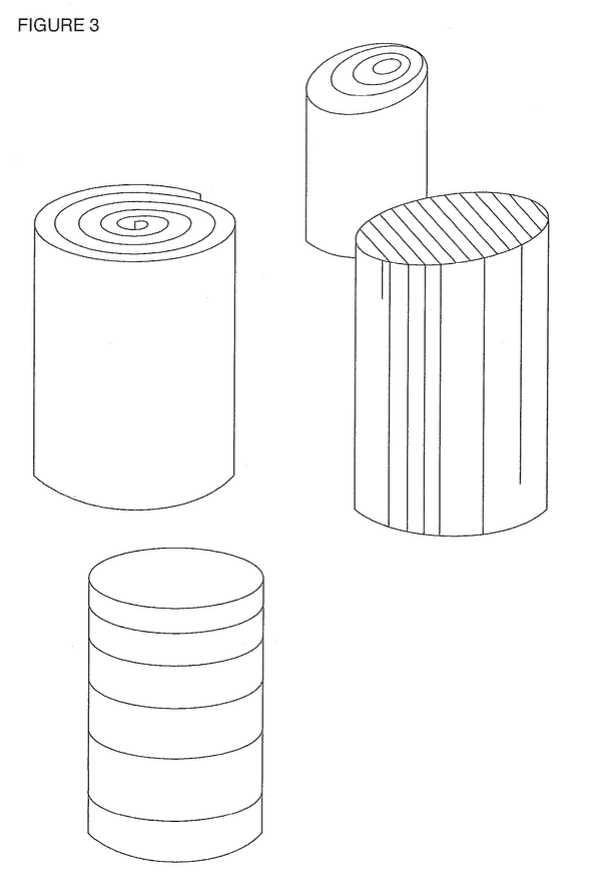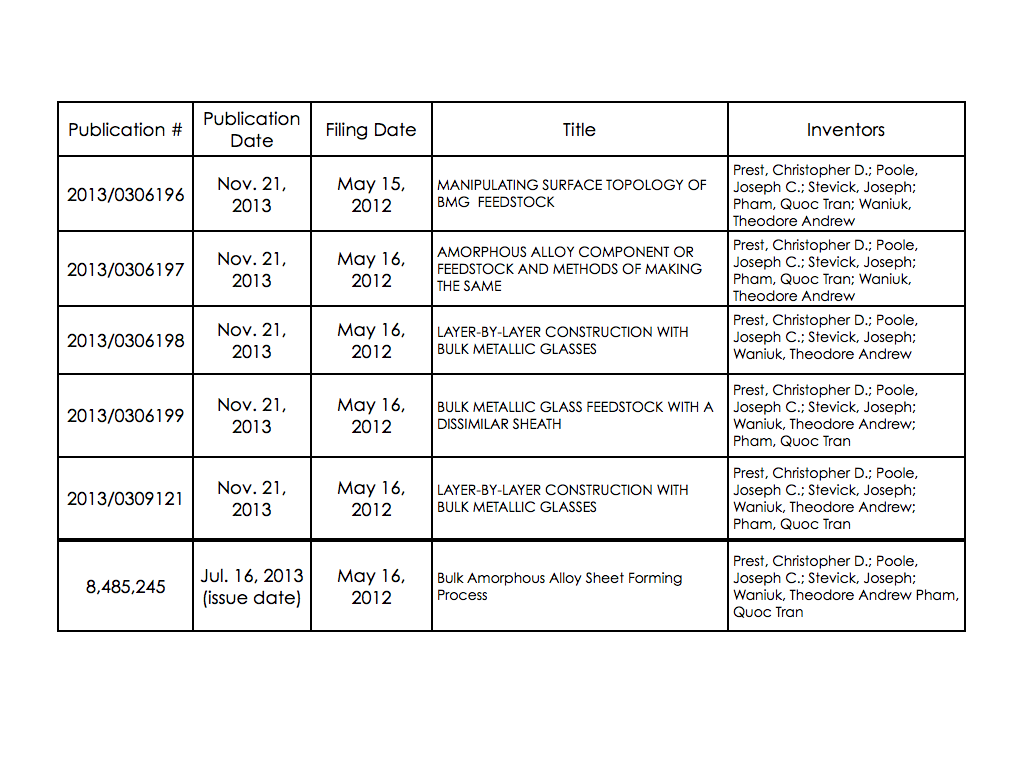Apple’s work in metallic glass … continued
Many out there look at patents as either isolated documents or as dots on a map. It is however quite often the case that the technology disclosed by a patent is part of a larger body of development. If one is aware of this larger body it provides much greater insight into a company’s activities.
Apple’s US9,375,788 i.e. the ‘788 patent is a case in point. There was minimal attention paid to it at issue. One brief note is here. I am looking at it because the ‘788 patent is an interesting example of a patent that fits into a larger picture. There is a multi-leveled story here; a story that begins with the ‘788 patent.
background
Before jumping into the ‘788 patent it is worth considering two bits of background information. When one hears the term “glass” one thinks of the material i.e. silica used in windows and bottles. Glass though is actually a structure of matter, not any given material. A glass is a material having an amorphous structure i.e. there atoms do not have a specific arrangement or order. This is unlike a crystal structure where the atoms have a regular order or arrangement.
The second concept is how one produces a glass structure. A liquid is amorphous. In most cases, as the liquid cools to form a solid the atoms have time to rearrange themselves into an ordered structure and a crystalline structure forms. This is the state in which they want to be. However, if one can cool a liquid fast enough the atoms do not have time to rearrange and the structure remains amorphous. For a metal the required cooling rates imply at least one of the dimensions is small. There are other concepts that could be filled out here, but let’s leave it at the need for a high cooling rate and one small dimension. If the required cooling rate dictates the size of this minimum dimension there is going to be research around increasing this dimension.
‘788 patent
An idea for increasing this dimension is disclosed in the ‘788 patent.
A discussion of the technology really gets going at col. 14, ln. 7. The first step in the method is to form amorphous feed-stock having a shape such that one dimension is small enough to meet the cooling rate requirements. Examples, of such a shape include a rod, a sheet or a disc. A larger structure or discrete piece is formed by assembling numerous pieces of feed-stock. Figure 3 of the ‘788 patent, which is reproduced below, illustrates some of the possible discrete pieces. This discrete piece is then formed into the final shape by thermoplastic forming. Again, without going into detail heat and pressure are applied to form the final shape, without disturbing the glass structure. In the end, one has a metallic glass with dimensions that are above the minimum dimension, which was found in the original feed-stock.
family
Now let’s turn our attention to the family. The patent application from which the‘788 patent issued is a member of the group of patent applications that were filed on May 15th or May 16th, 2012. I wrote about this family here in 2013. Table 1 form this article noted patent applications filed in the above two-day window. It is reproduced below. At that time patent 8,485,245 had already issued and, I had already written about it here. The ‘845 patent disclosed the use of a so-called float glass process to form large 2D sheets of amorphous metal. This method could be used to either form the feed-stock for the ‘788 patent, or it could be used to simply produce sheets.
With this family of patents one can see at least some of the research around forming metallic glass structures with dimensions larger than the minimum, or critical, dimension at Apple. By tracking the family, and reading the disclosures one can get an idea of the scope of development. There is much more out there than being the first to simply note a patent’s existence or plotting a dot on a contour map.




